Currently I am making a camera player with a textureview to render my camera. Because the preview can have any dimension I have created some custom code to alter the textureview when OnSurfaceTextureUpdated is called:
void updateTextureMatrix(int width, int height) {
Display display = WindowManager.DefaultDisplay;
var isPortrait = (display.Rotation == SurfaceOrientation.Rotation0 || display.Rotation == SurfaceOrientation.Rotation180);
int previewWidth = orgPreviewWidth;
int previewHeight = orgPreviewHeight;
if(isPortrait) {
previewWidth = orgPreviewHeight;
previewHeight = orgPreviewWidth;
}
// determine which part to crop
float widthRatio = (float)width / previewWidth;
float heightRatio = (float)height / previewHeight;
float scaleX;
float scaleY;
if(widthRatio > heightRatio) {
// height must be cropped
scaleX = 1;
scaleY = widthRatio * ((float)previewHeight / height);
} else {
// width must be cropped
scaleX = heightRatio * ((float)previewWidth / width);
scaleY = 1;
}
Android.Graphics.Matrix matrix = new Android.Graphics.Matrix();
matrix.SetScale(scaleX, scaleY);
_textureView.SetTransform(matrix);
float scaledWidth = width * scaleX;
float scaledHeight = height * scaleY;
float dx = (width - scaledWidth) * 0.5f;
float dy = (height - scaledHeight) * 0.5f;
_textureView.TranslationX = dx;
_textureView.TranslationY = dy;
}
The scaling & calculation of dx & dy work perfectly fine on older android devices but the devices I have at my disposal with API level 23 throw unexpected behaviour.
The galaxy S3 displays it correctly:

The phone cuts off a lot of the image, despite positioning it correctly. This makes me believe the bottom part is not being rendered where on older devices it is. Can anyone confirm this and point me in the correct position to fix this issue?
